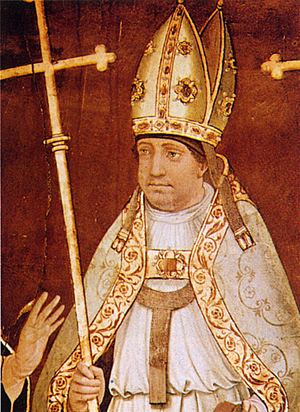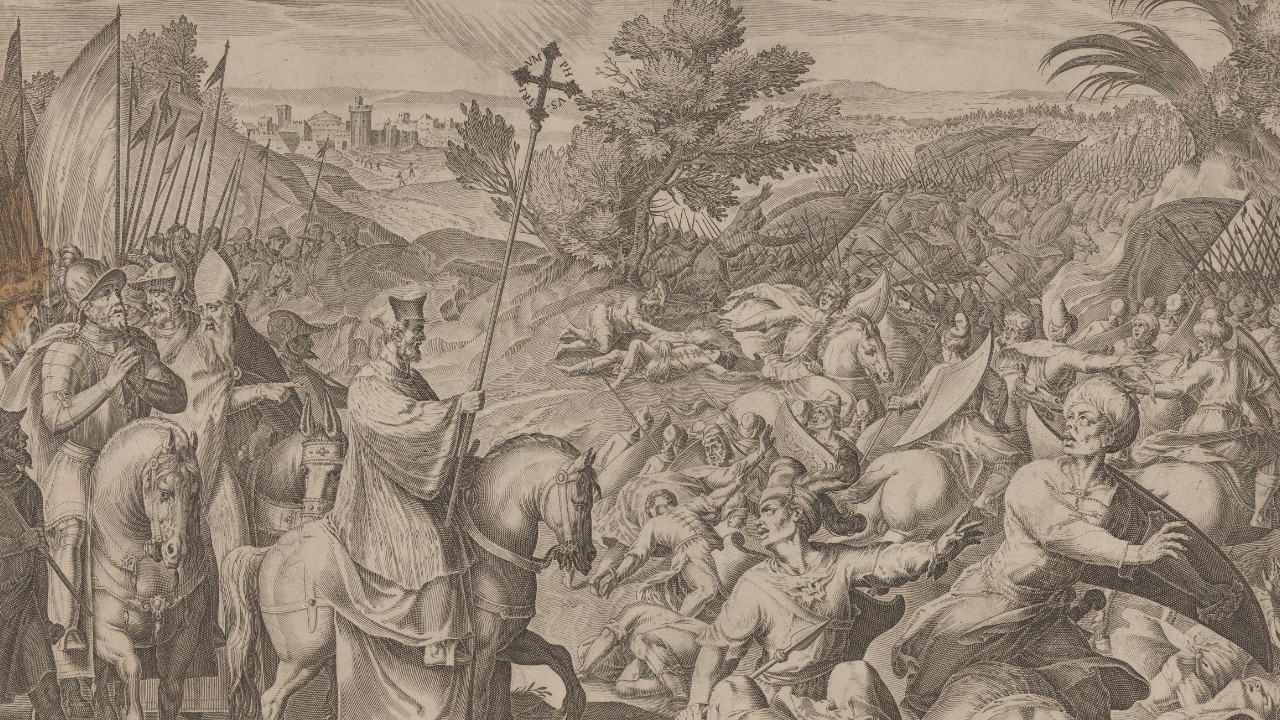
One of the most forgotten yet significant battles in world history is the battle of Las Navas de Tolosa in Jaen, Spain which pioneered the total Reconquista of Spain from the hands of the Muslims.
Battle of Las Navas de Tolosa is a major battle of the Christian reconquest of Spain in which the Almohads, a Muslim dynasty of North Africa and Spain, were severely defeated by the combined armies of Castile, Aragon, Navarre, and Portugal. The battle was fought about 64 km north of Jaén, in Andalusia, southern Spain. This Crusade was organized by Alfonso VIII of Castille, the Archbishop of Toledo Rodrigo Ximénez de Rada, and Pope Innocent III to protect the Christian realms of Iberia.
The beginning

For centuries, most parts of Southern Spain were at the hands of Muslims and there were military campaigns for centuries to recover them. Immobilized for several years by his crushing defeat at Alarcos (1195) at the hands of the Almohads, King Alfonso VIII of Castille gained the support of the Archbishop of Toledo, Rodrigo Ximénez de Rada, who proceeded to stir up indignation at the Muslim victory over Christians.

A proclamation of a Crusade was obtained from Pope Innocent III, which elicited further support from several French bishops, and, in the spring of 1212, contingents of French knights and Knights Templars began to converge on Toledo. After some delay, the Crusade set out southward on June 21, augmented by the armies of Aragon, Castile, and Portugal. Despite their success in taking two Muslim fortresses, the non-Spanish forces were soon discouraged by adverse climatic and living conditions and returned home. The armies of Navarre, however, were then recruited for the expedition.
Meanwhile, on June 22 the Almohad caliph Muḥammad al-Nāṣir had moved to Jaén, then the mountainous area around Baeza, intending to cut off the Christians at the plain of Las Navas de Tolosa.
The Battle

Soon after their arrival on July 12, the Christians took Castroferral with hopes of then reaching the Muslim encampment through the pass of La Llosa. The pass was heavily guarded, however, and it was through a local shepherd who directed the Christians to an alternate opening that they were able to reach the Muslim base.
Great forces had already marched towards King Alphonsus in Toledo; Peter, King of Aragon, had already assembled a respectable corps; news had already spread among the multitude that Sanctius, King of Navarre, was marching out; the nobles, the Bishops headed by the Bishop of Toledo, surrounded with gleaming armies, were already girding the side of the King; when all, having set out not without the providence of Christ, invaded the dominion of the Moors.
The King of the Moors, who had assembled a great army in Jaen, where he discovered the Christians encamping at the foot of the mountains, sent ahead a party of horsemen that might surprise them in ambush disadvantaged in the narrow passages of the mountains, he followed at a slower pace with the remaining troops.

King Alfonso, however, had already sent a troop of horsemen to reconnoiter the mountaintops, which, having quickly chased away the Moors, took hold of the plateau (which they called Navas de Tolosa), and secured the area with camps. Alfonso, glad that his forces had taken the mountaintops from the conquered enemies, ordered the entire army to climb them. The ascent was difficult but guided by locals, troop by troop, all evaded the peaks of the mountain, and on that and the following day abstained from battle.
At midnight, which followed the second day after the mountain was scaled, the Christian army was enjoined by the voice of a herald to cleanse their minds through sacramental confession, nourish their bodies, and ready their weapons and horses, and intently await the signal of war at first light. Which was received with much applause and joy of all, that they complained of the night, as it was already running late.
Day broke, and with many having received the Holy Eucharist, with others the Archbishop’s blessing instead of Communion, Alfonso, having led all the forces, arrayed the battle line, and apportioned commands amongst the kings and nobles. By no means, however, can it be briefly said that everyone took hold of their position, and everyone received a position to take; suffice to say that it was clear from what happened that everyone boldly and wisely discharged all the duties of the most distinguished commander King Alfonso.
The Divine Intervention

When the forces, therefore, had clashed, the battle raged bitterly on, and victory was uncertain for a long time, to such an extent that King Alphonsus told the Bishop of Toledo, “Behold, O Archbishop, here, we may die here.” To which the Archbishop, “In no way shall we die here, O King, nay we shall happily vanquish.” And this was accomplished with the favor of the heavens.
For the Moors were vanquished and killed in the massacre. Their King put himself to flight with four horsemen away from the battle. Two thousand of the Moors were counted killed, while only twenty-five of ours were mourned.
Wondrous things came to pass in this battle. First, the number of fallen men is greater than the mere number of fallen Christians. Likewise, when the troops appeared fighting best, The Holy Cross was seen in the air during battle by Alphonsus and by so many others. Moreover, the Cross that was customarily carried before the Bishop of Toledo twice aloft penetrated the enemy battle line (while the ensign Dominic Paschasius, canon of the Church of Toledo, was unharmed). It was reported that during the battle, when the Christian forces were in absolute danger, King Alphonsus VIII saw another cross appear in the sky which gives the reason why such victory was referred to as the “Triumph of the Holy Cross”. Finally, at the sight of the image of the Blessed Virgin Mary, which was depicted in the royal banners, the great multitude of the Moors collapsed.
This Victory at Las Navas de Tolosa was attributed to the great power of the Cross that took place on July 16, 1212.

Al-Nāṣir fled, while Alfonso followed up his victory by immediately taking Baeza and Úbeda. During one of these battles, it is said that Alfonso VIII returned victorious from the battle of Las Navas de Tolosa, he tells how the advice of a shepherd who had shown them a secret path in Sierra Morena to surprise the Muslims had been decisive in the course of the war. When the monarch contemplated St. Isidore the Farmer’s incorrupt body then recognizes the shepherd who had wisely advised him in battle. The Saint had appeared to him once dead to guide him to victory
The extensive effects of the Muslim defeat did not become apparent until after 1233, when the Almohad empire disintegrated owing to dynastic squabbles and, lacking a central leader, the Muslim hold on Spain slipped rapidly before the armies of the Christian reconquest.
Ecclesiastical Recognition

The victory at Las Navas de Tolosa was commemorated by the Feast of the Triumph of the Holy Cross in Las Navas de Tolosa which is commemorated every July 16. The name might have been inspired by the feast of the Exaltation of the Holy Cross, which commemorated Emperor Heraclius’s defeat of the Persians.
This feast was a holy day of obligation in many Spanish dioceses during the Middle Ages, and it was one of the select feasts celebrated with a High Mass, Vespers, and sermon in the Royal Chapel of Castile.
The synod of Toledo held in 1536 under Cardinal Juan Pardo de Tavera confirmed this feast’s status as a day of obligation. After the Tridentine reforms, all the Spanish dioceses confirmed their liturgical books to the Roman ones, but, at the request of King Philip II, on 30 December 1573 Pope Gregory XIII issued the bull Pastoralis officii permitting the lands subject to the Spanish crown to retain several local traditional feasts, including that of the Triumph of the Holy Cross; during this time the feast is also found in liturgical books from Portugal and the New World.

Centuries later, however, it was overshadowed by the increasing popularity of the feast of Our Lady of Mount Carmel, also on 16 July, which was fixed onto the universal calendar in 1726, although the Triumph continued to be celebrated in some dioceses of Spain with July 17 (then also on July 21) until the liturgical reforms wrought in the aftermath of Vatican II.
The Feast is still celebrated in different parts of Spain and its colonies, notably in the Philippines at Cariaga, Leyte which is observed every July 17 until it was moved to July 15.
The historic battle lead to the collapse of the Almohad Empire, the collapse of al-Andalus, the Christian expansion southwards, and later the unification of Spain which became one of the most powerful Catholic countries in history that helped spread Christianity to the New World and the Far East.
References:
“Battle of Las Navas de Tolosa”, Retrieved from https://www.britannica.com/event/Battle-of-Las-Navas-de-Tolosa on July 16, 2022.
“Crusader Feasts in Spain: The Triumph of the Holy Cross”, Retrieved from https://sicutincensum.wordpress.com/2018/07/14/crusader-feasts-in-spain/?fbclid=IwAR0qWOdXBKNpPl73Iw32xmu3__aSA9Z36_d9aalKko4Skk3Uij7r7l5fYAU on July 16, 2022.
“Feast of the Triumph of the Holy Cross”, Retrieved from https://deipraesidiosuffultus.wordpress.com/2013/07/07/feast-of-the-triumph-of-the-holy-cross/ on July 16, 2022.
“San Isidro y el milagro de las Navas de Tolosa”, Retreived from https://www.biodiversidadvirtual.org/etno/San-Isidro-y-el-milagro-de-las-Navas-de-Tolosa-img41912.html on July 16, 2022.

